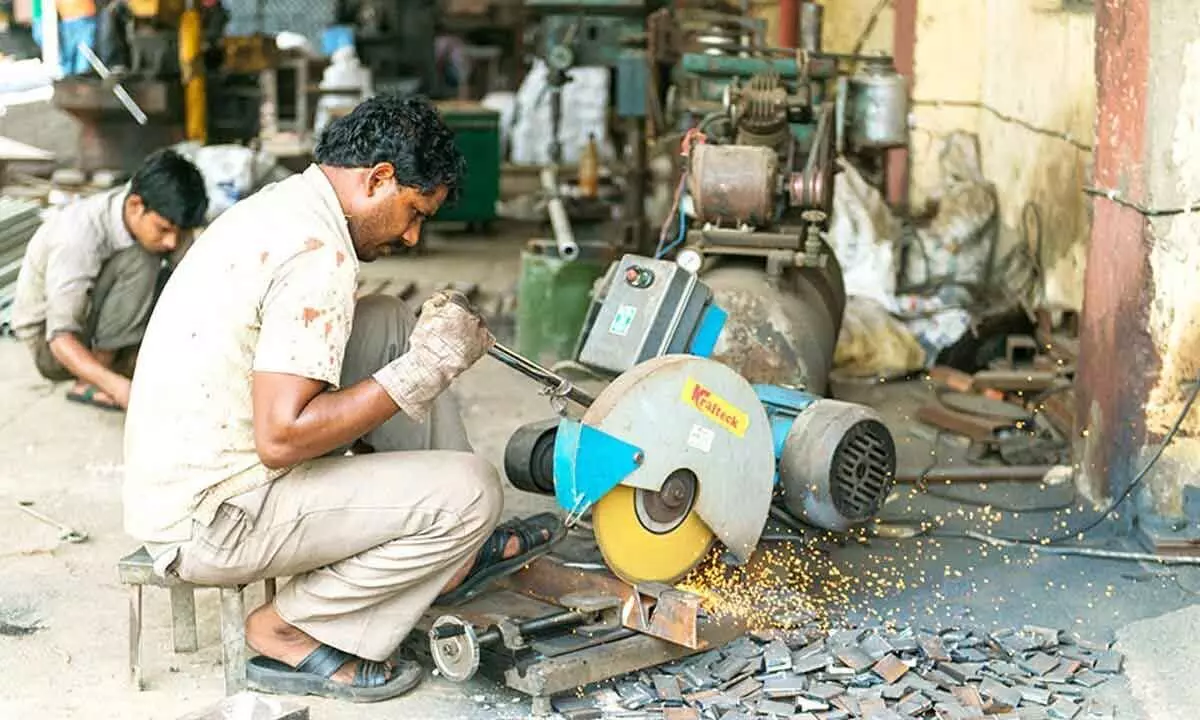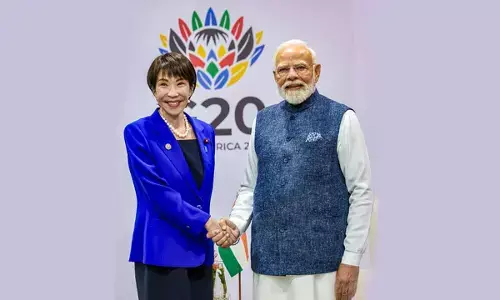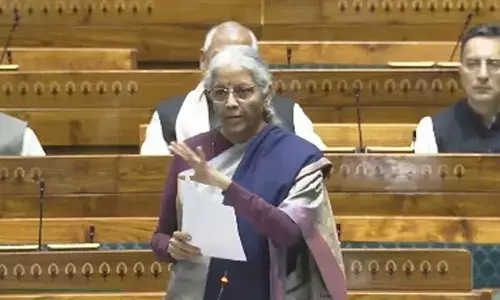Only creation of jobs can add value to budget boost for MSMEs

Only creation of jobs can add value to budget boost for MSMEs
Allocations for MSME ministry raised to a healthy `22,138 cr from last fiscal’s `21,422 cr
In a continuation of the trend in vogue for the last two years, the budget proposals for 2023-24 have made an aggressive push towards capital expenditure on infrastructure. The aim has been two-fold-not just to stimulate growth but also to create more jobs. This is an issue that has been widely seen as a lacuna in the present government's model for economic growth. Not only has the unemployment rate been rising over the past few years, especially during the pandemic, but the employment rate has also been falling, in terms of the numbers of adults coming into the workforce.
The Economic Survey had highlighted the improvement in the unemployment rate in the July-September 2022 quarter, which touched 7.2 per cent compared to 9.8 per cent in the corresponding quarter in the previous year.
But this rose sharply to 8.3 per cent in December, the highest in 16 months, according to the Centre for Monitoring Indian Economy (CMIE). In addition, the urban unemployment rate rose to 10.06 per cent from 8.96 per cent in the preceding month. Ironically, both bad and better news came simultaneously that the employment rate rose during the same month to 37.1, the highest since January 2022. The labour participation rate also went up to a robust 40.48 per cent during the month.
In even better news, the latest CMIE data shows that the unemployment rate has fallen to 7.14 per cent this January with the urban unemployment rate also declining in tandem to 8.55 per cent. While this is positive news, there can be no doubt that the level of unemployment in this country is far too high to meet the needs of a young population. In comparison, China's unemployment rate is 4.8 per cent, while that of Malaysia is 3.5 per cent and it is 3.5 per cent in the United States.
This implies that measures are needed to be taken on an urgent basis to create more jobs. While the drive towards higher capex is a step in the right direction, the government also needs to try and stabilise the informal unorganised sector, which employs large numbers of skilled and unskilled persons.
The move to provide more sops to micro, small and medium enterprises (MSMEs) is thus welcome but more is needed to reach out to those in the unorganised sector. The issue of higher credit availability was flagged in the earlier relief package meant for Covid-hit industries. The current budget proposals envisage revamping the credit scheme for MSMEs by reducing the interest rate by one per cent. In addition, Rs. 9000 crore has been infused into the corpus enabling the enterprises to utilise collateral-free guarantee of Rs two lakh crore. It must be noted that the country's MSME sector accounts for as much as 30 per cent of GDP and employs nearly 110 million people.
Allocations for the MSME ministry has also been raised to Rs. 22,138 crore in the 2023-24 budget estimates as compared to Rs. 21,422 crore in the last fiscal. This is, however, considerably higher than the revised estimates of Rs. 15,628 crore for 2023-24.
The only problem is that little has been done to focus on the unorganised sector of micro and small enterprises. Many studies have found that 90 per cent of the labour force is employed in the informal sector. While this is spread over many sectors, it is equally true for manufacturing concerns and contact-intensive industries. It is therefore essential that government policies must take into account tiny units that are not registered and therefore not eligible for many of the credit facilities that can be availed of by registered formal entities.
In this context, one must mention the new scheme proposed in the budget for artisans and traditional crafts to help them improve the quality, scale and reach of their products. The Pradhan Mantri Vishwakarma Kaushal Samman (PM-VIKAS) scheme aims to integrate them with the MSME value chain. Some of the key components of the scheme include financial support, access to skill training and modern digital techniques, brand promotion and social security.
It is on these lines that more such programmes need to be created to bring informal manufacturing units into the mainstream. This would ensure formalising of these entities as well as making them more profitable and remunerative for the owners, while providing social security to the employees.
There is no doubt that the budget proposals have taken a start in dealing with a particularly perennial problem faced by smaller businesses-the issue of delayed payments. It is a small beginning, by ensuring that deduction for expenditure incurred on payments made to them will be done only when the payment is actually made to them. The turnover limits for presumptive taxation have also been raised from Rs. two crore to Rs. three crore. Much more is needed to be done on this front, given that pending payments of micro and small units touched Rs. 8.73 lakh crore by 2021-end.
On that count, the budget proposals have made a start in helping micro and small units but there is a need to tap and take advantage of the sector's enormous employment potential by creating jobs.














